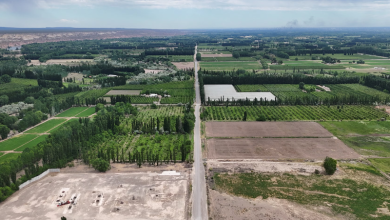How is climate change exacerbating Bangladesh’s arsenic poisoning crisis?

Experts fear climate breakdown is set to put tens of millions of people in Bangladesh at an elevated risk of cancer – as sea level rises and extreme climate change-driven events can accelerate the release of dangerous levels of arsenic into the drinking water supply.
The result is likely an intensification of a public health crisis already gripping the country as scores of Bangladeshis are suffering skin, bladder and lung cancers as a result of arsenic poisoning. Dr Seth Frisbie shared key insights in a recent presentation of the findings.
Lead researcher of the study, an emeritus professor of chemistry at Norwich University, said chronic arsenic poisoning is a real problem in Bangladesh, highlighting concerning circumstances in a village he once entered as “no one was over 30 years old” there.
“Largest mass poisoning of a population in history”
The origins of the crisis date back to the 1970s, when the country had one of the highest rates of infant mortality due to polluted surface water. NGOs and UN aid agencies sponsored a programme of deep tube well boring to provide clean water.
The new project helped reduce rates of child mortality by limiting the spread of waterborne diseases. But by the 1990s, it started becoming evident that water drawn from sedimentary rocks beneath Bangladesh contained high levels of naturally occurring arsenic.
In 1993, the “largest mass poisoning of a population in history” gripped the country, pushing its population into impending danger. Chronic arsenic poisoning leads to a buildup of the naturally occurring element inside the bodies of those affected.
Lead researcher Frisbie further mentioned: “My current estimate is about 78 million Bangladeshis are exposed, and I believe a conservative estimate is that about 900,000 Bangladeshis are expected to die from lung and bladder cancer.”
Arsenic poisoning crisis not limited to Bangladesh
Climate change is exacerbating the problem. As sea levels continue to rise, Bangladesh could be disproportionately affected by flooding, that can change the chemistry of the underlying aquifer through a process called “reduction” to leach even more arsenic from its sediment.
Meanwhile, seawater ingress into the aquifer, another consequence of rising sea levels, can increase its salinity, another chemical change that is expected to increase the rate that arsenic leaches into the water – through a process called “the salt effect”.
Read More: Davos 2024: Climate change in the limelight as leaders converge for annual meeting
Nonetheless, the arsenic poisoning crisis is not limited to Bangladesh, as the effects will be felt across the globe. “These chemical processes are global,” said Frisbie, noting “there is this reduction of arsenic in Manchester, there is the salt effect in Louisiana [due to floods].”



